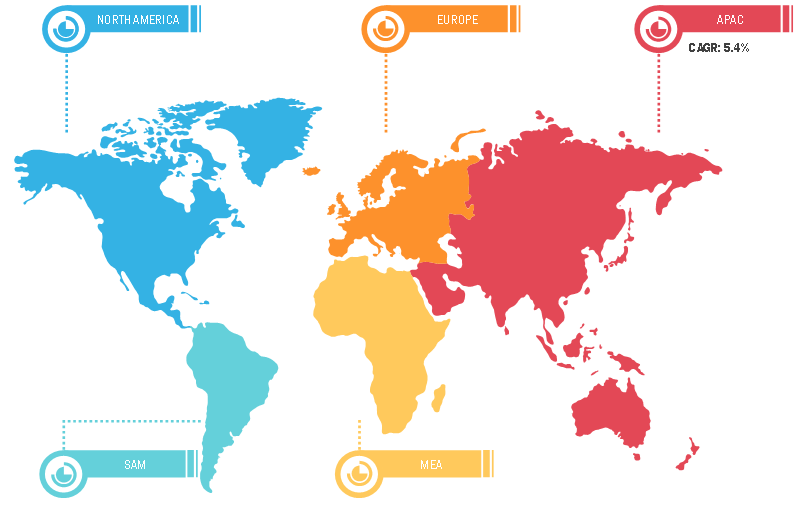Rise in Demand for Man-Made Webbing to Contribute to Webbing Market Growth during 2021–2028
According to our latest market study on “Webbing Market Forecast to 2028 – COVID-19 Impact and Global Analysis – by Material (Natural and Man-Made); Product (Flat Webbing, Tubular Webbing and Others) and End Use (Aerospace, Automotive, Military, Industrial and Safety, Fashion Accessories, E-Textile, Sport Goods, Marine, Medical and Others),” the market is projected to reach US$ 1745.84 million by 2028 from US$ 1,195.35 million in 2020; it is expected to grow at a CAGR of 5.1% from 2021 to 2028. The report highlights key factors driving the market growth and prominent players along with their developments in the market.
Webbing is a strong woven fiber available in flat strips or tube form; it is used as a substitute of rope. Conventionally, webbing is produced using cotton and silk, however, polymer, nylon, and polyester are replacing the traditional materials. Webbing is known for its properties such as convenience, tensile strength, and chemical resistance; it can be used as a replacement of steel wires, ropes, or chains in various industrial applications. Webbings are significantly used in military apparels, parachutes, climbing, automotive textile, fire safety gear, military goods, harnesses, packs, hiking gear, and others. Other than this, webbing is extensively used to produce protective equipment for oil & gas workers.
The demand for man-made webbing has risen more significantly than natural webbing materials. Aramid fibers, polybenzoxazole, polyester, polypropylene, and nylon are the several types of synthetic materials used in webbing. Polyester is known for its outstanding characteristics such as high tensile strength and easy maintenance along with resistance toward water, abrasions, and ultraviolet radiations, stretching, shrinkage, resistance, and chemicals. Therefore, polyester-based webbings are being used in a diversified range of application such as marine fabric applications, bag handles, sail ties, and support straps. Moreover, slings made from synthetic polyester (fiber material) are comparatively lighter in weight than both wire rope and chain slings. Other than polyester, the demand for nylon is high owing to its better elasticity than other materials. Nylon-based webbings are being used in airbags, seat belts, safety harnesses, and luggage nets, among others. Remarkable features of carbon fibers include limited thermal expansion, extreme temperature tolerance, chemical resistance, high tensile strength, and low weight, which make it an ideal webbing material. The carbon fiber-based webbings are used in military and sporting goods.
American Cord & Webbing Co, Inc.; Belt-tech; E. Oppermann GmbH; Narrowtex Australia; and National Webbing Products Co. are among the well-established players operating in the webbing market.
Impact of COVID-19 Pandemic on Webbing Market
As of June 2021, the US, India, Brazil, Russia, the UK, France, Spain, Italy, Turkey, Germany, Colombia, and Argentina are among the worst-affected countries in terms of COVID-19 cases and deaths. Measures imposed in several countries to contain the disease spread, including lockdown, travel bans, and business shutdowns, have severely impacted economies and industries. Chemicals & materials is one of the major industries experiencing severe disruptions due to the discontinuation of supply chains and plant operations. The shutdown of manufacturing plants in key regions such as North America, Europe, and APAC has hampered the global supply chain, thereby affecting manufacturing processes, distribution schedules, and product sales. The consequences of COVID-19 pandemic have also led to the slowdown of webbing production, demand, and trade. The shutdown of national and international boundaries have affected business development strategies of various companies. Nevertheless, with the economies planning to revive their operations, relaxing lockdown measures, and conducting mass vaccination drives, the webbing market is likely to bounce back in the coming months.
Geographic Overview of Webbing Market

Webbing Market Size, Growth & Opportunities | 2028 Report
Download Free Sample
Webbing Market Forecast to 2028 - COVID-19 Impact and Global Analysis By Material (Natural and Man-Made), Product (Flat Webbing, Tubular Webbing and Others), and End Use (Aerospace, Automotive, Military, Industrial and Safety, Fashion Accessories, E-Textile, Sport Goods, Marine, Medical and Others)
Webbing Market Size, Growth & Opportunities | 2028 Report
Download Free SampleWebbing Market Forecast to 2028 - COVID-19 Impact and Global Analysis By Material (Natural and Man-Made), Product (Flat Webbing, Tubular Webbing and Others), and End Use (Aerospace, Automotive, Military, Industrial and Safety, Fashion Accessories, E-Textile, Sport Goods, Marine, Medical and Others)
The report includes the segmentation of the webbing market as follows:
By Material
- Natural
- Man-Made
By Product
- Flat Webbing
- Tubular Webbing
- Others
By End Use
- Aerospace
- Automotive
- Military
- Industrial and Safety
- Fashion Accessories
- E-Textile
- Sport Goods
- Marine
- Medical
- Others
By Geography
- North America
- US
- Canada
- Mexico
- Europe
- Germany
- France
- UK
- Italy
- Russia
- Rest of Europe
- Asia Pacific (APAC)
- Australia
- China
- India
- Japan
- South Korea
- Rest of Asia Pacific
- Middle East & Africa (MEA)
- South Africa
- Saudi Arabia
- UAE
- Rest of Middle East & Africa
- South America
- Brazil
- Argentina
- Rest of South America
Phone: +1-646-491-9876
Email Id: sales@theinsightpartners.com